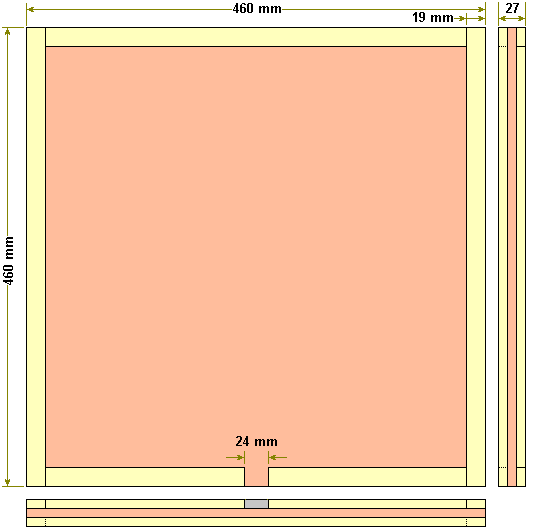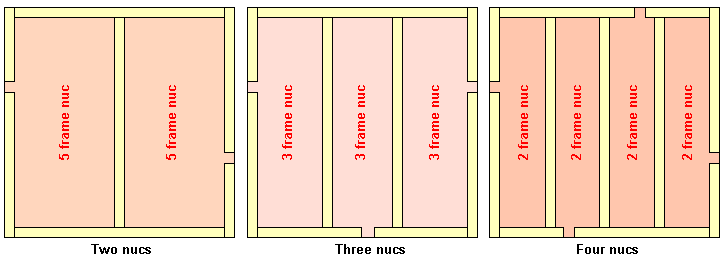Top Bee Space Version
|
|
|
|---|
National Bee Hive Split Board or Wedmore board
(Wedmore promoted them, and the principles involved in their use)
|
Top Bee Space Version |
National Bee Hive Split Board or Wedmore board(Wedmore promoted them, and the principles involved in their use) |
|---|
|
The Grain should run along the longest dimension of any part. Cutting of parts (all dimensions in mm). |

|
|---|
| Qty | Length | Width | Thickness | Material | Usage |
|---|---|---|---|---|---|
| 1 | 460 | 460 | 9 | Exterior Plywood | Main Panel |
Rim parts are 19 mm x 9 mm in various lengths to suit the different layouts.
This drawing illustrates the single version (common split board) at 1 pixel per mm scale. (There are no gaps in the underside rim.)
|
This item of equipment is not much different to a crown board with a piece cut from the upper rim. In fact it is common to make one from a cover board, the holes in such a board may be covered by mesh or aluminium sheet. (See porter escape hole plates.) I have found this type of board extremely useful along with the Artificial Swarming and Demaree System for actually forming nucs in one operation along with swarm control. However if you intend to do this you must make sure that the queencells that you use have come from a stock that you would wish to propagate from. |

|
|---|
The drawing below illustrates different layouts of the top surface for two, three or four nucs at a reduced scale.

|
It may have been a sign of the times that Wedmore lived in, but he incorporated 25 mm wide verandas on any edge that contained an entrance slot. The corners being cut at 45° in order that workers from different nucs could not walk onto the alighting verandah of another. |
Versions with and without verandas were manufactured at APEX Enterprises (I have personally used both types in the field and cannot say there is any benefit in having the verandas). For storage and transport reasons I sawed off all remaining verandas in my personal equipment during 1995.
Assembly is simple, using a waterproof PVA type glue and 16 mm pins or staples.
This style of board has a bee space on both sides of the main panel. If petroleum jelly is used on the rim and linseed oil is used on the main panel the finished items will give many years of good service.
There is a top bee space version which is very similar, but does not have a rim on the underside.
Written... Autumn 2000, Revised... 20 October 2001, Revised... 29 May 2003, Upgraded... 06 December 2005,
|